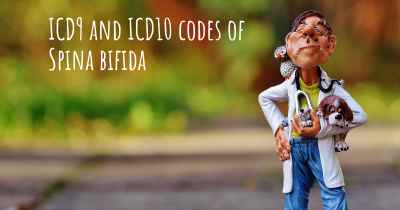What are the best treatments for Spina bifida?
See the best treatments for Spina bifida here

Treatments for Spina Bifida
Spina bifida is a congenital condition that affects the development of the spinal cord and the surrounding structures. It occurs when the neural tube, which forms the baby's spine, fails to close properly during early pregnancy. The severity of spina bifida can vary greatly, and treatment options depend on the specific needs of each individual. While there is no cure for spina bifida, there are several treatments available to manage the condition and improve quality of life.
1. Surgery
Surgery is often the first line of treatment for spina bifida. It aims to close the opening in the spine and prevent further damage to the spinal cord and nerves. The timing of surgery depends on the type and severity of spina bifida. In some cases, it may be performed shortly after birth, while in others, it may be delayed until the child is a few months old. The surgical procedure can help reduce the risk of infection and further complications.
2. Physical Therapy
Physical therapy plays a crucial role in the treatment of spina bifida. It focuses on improving mobility, strength, and coordination. Physical therapists work with individuals to develop personalized exercise programs that target specific areas of weakness or impairment. These exercises can help enhance muscle control, improve balance, and increase overall physical function. Physical therapy may also involve the use of assistive devices, such as braces or crutches, to aid in walking and mobility.
3. Occupational Therapy
Occupational therapy helps individuals with spina bifida develop the skills needed for daily activities and independence. Occupational therapists work on improving fine motor skills, such as writing, dressing, and feeding. They may also provide assistive devices or adaptations to make tasks easier. Additionally, occupational therapy can address cognitive and sensory issues that may be associated with spina bifida, helping individuals overcome challenges and maximize their potential.
4. Medications
Medications may be prescribed to manage various symptoms and complications of spina bifida. For example, individuals with spina bifida often experience bladder and bowel dysfunction. Medications can help regulate these functions and prevent urinary tract infections. Additionally, certain medications may be used to manage pain, muscle spasms, or other associated conditions. It is important to consult with a healthcare professional to determine the most appropriate medications for each individual's specific needs.
5. Assistive Devices
Assistive devices can greatly improve the quality of life for individuals with spina bifida. Wheelchairs, walkers, and crutches can assist with mobility and independence. Orthotic devices, such as braces or splints, can provide support and stability to weakened or paralyzed limbs. Communication devices and computer adaptations can help individuals with speech or motor impairments to communicate effectively and access technology. The use of assistive devices is tailored to each individual's unique needs and abilities.
6. Continence Management
Continence management is an important aspect of spina bifida treatment. Bladder and bowel dysfunction are common in individuals with spina bifida, and various strategies can be employed to manage these issues. This may include timed voiding, catheterization, medication, or surgical interventions. Continence management programs are designed to promote independence, prevent complications, and improve overall quality of life.
7. Psychological Support
Psychological support is essential for individuals with spina bifida and their families. Coping with a lifelong condition can be challenging, and emotional well-being is crucial. Psychologists, counselors, or support groups can provide guidance, counseling, and a safe space to discuss concerns and challenges. Psychological support can help individuals and families navigate the emotional aspects of living with spina bifida and develop effective coping strategies.
It is important to note that the treatment approach for spina bifida is highly individualized. The specific treatments and interventions may vary depending on the severity of the condition, associated complications, and the unique needs of each individual. A multidisciplinary team, including healthcare professionals from various specialties, works together to develop a comprehensive treatment plan that addresses the physical, functional, and emotional aspects of spina bifida.
Posted May 18, 2017 by Victor Maine 2470
Posted May 18, 2017 by Edith 2100
Posted May 18, 2017 by andrea 550








